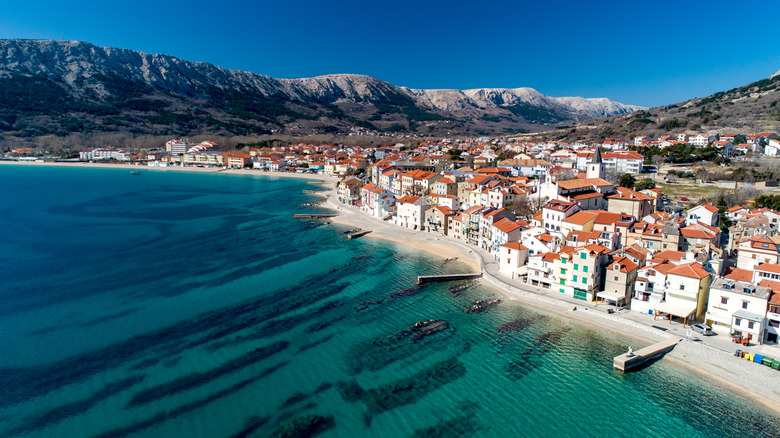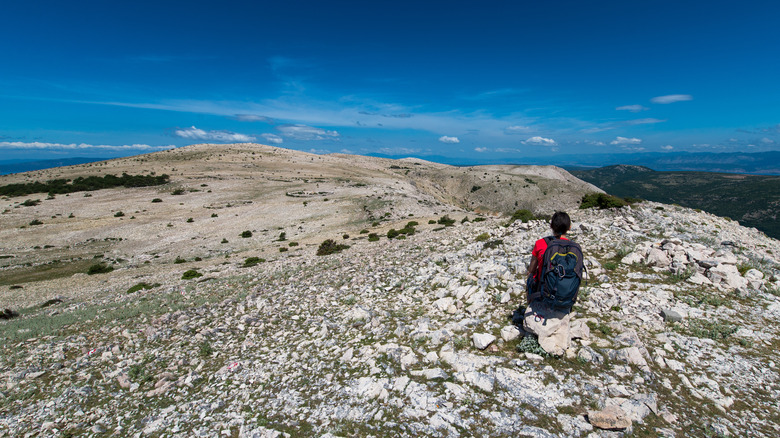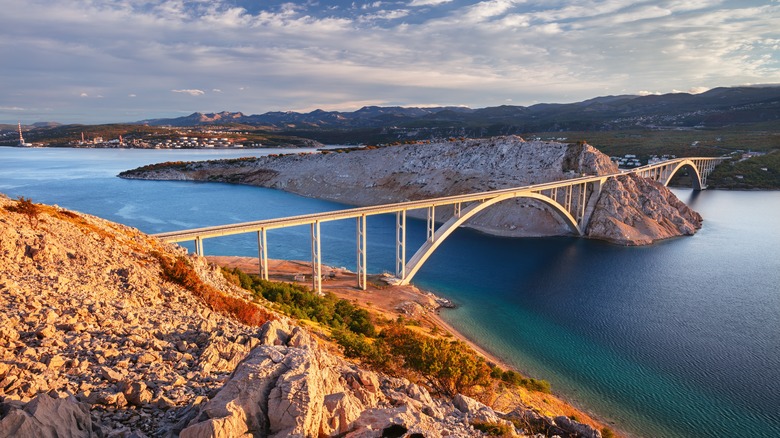Escape Crowds At Europe's Lesser-Known 'Golden Island' With Lush Landscapes And Beaches
Croatia is often overshadowed — unfairly, if you ask us — by other European travel destinations such as France, Italy, and Greece. However, the Balkan country is a must-visit for any beach lover and history enthusiast. Croatia is packed with beautiful places rich in culture, and the stunning island of Krk is no exception.
Krk Island is situated in the Adriatic Sea, nestled along the country's northern coast. It's one of the largest islands in the region, with an area spanning 157 square miles — big enough to explore for days and not run out of things to do. And with the superb weather, you'll be happy to leave the comfort of your hotel room each day in search of new outdoor activities and sites. Krk is known for having an abundance of sunshine and a mild climate, where nature and greenery can thrive. It's for this reason that the destination is proudly nicknamed the "Golden Island," a moniker it's had since ancient times.
You'll never get bored in Krk
One of the top reasons to visit Krk, especially in the summer, is to spend time sunbathing and swimming at one of the many beaches. On the island, you can expect to find picturesque pebble shorelines and topaz-hued waters with lush vegetation and orange-topped houses serving as the backdrop. One unique spot is Meline Beach, where tourists go to cover their skin in mud believed to have healing properties.
However, beaches are just the beginning of Krk's fun and intriguing attractions. Adventurous travelers will appreciate the hiking and walking trails found around the island. The most thrilling is the route to the top of Obzova, the highest peak in Krk. After a two-hour trek, hikers are treated to gorgeous views of the bay and nearby islands. If you're the outdoorsy type, you can end your day of exploring by slipping into one of Krk's campsites for some rest. Campgrounds are available all over Krk, including along the coastline.
A trip to Krk wouldn't be complete without learning about the island's history and culture. The main parts of town — most notably Krk Town, Vrbnik, and Omišalj — are brimming with historical architecture, museums, and archaeological remains. Elsewhere in the area, you can find old religious monuments, including the Franciscan monastery located on Krk's tiny Košljun island. (Just make sure you're cautious of what you pack so you can dress appropriately.) Remember to get familiar with the island's food culture during your stay. Krk is known for its žlahtina wine, fresh olive oil, cheeses, and homemade pasta.
How to get to Krk, Croatia
Krk isn't as well-known among international tourists as Ibiza or Mykonos, and that might have something to do with its location. Unfortunately, it's not a simple direct flight away, especially if you're coming from the U.S. or another faraway departure point. With that said, it's likely easier to reach Krk than you might assume. The island's Rijeka Airport hosts flights operated by Croatia Airlines, Lufthansa, and a handful of other carriers, including budget airlines. If a flight to Krk isn't available from your home city, you may also fly into Zagreb (arguably the most underrated destination in all of Croatia) or another larger Croatian city first.
Krk is connected to the mainland via the Krk Bridge, making it easy to access by car. Book a rental car or load up your RV and drive straight to the island, enjoying the spectacular view on the way. There are also buses from Zagreb and the city of Rijeka (not to be confused with the airport of the same name) that will take you to Krk in just a few hours.


